Early Indicators of Hormonal Imbalance in Women Over 50
As women enter their fifties, hormonal changes become increasingly prominent due to the natural transition into menopause and the gradual decline of estrogen and progesterone. These shifts can affect nearly every system in the body, sometimes triggering symptoms that are easy to overlook. Early detection of hormonal imbalance is crucial, as recognizing even subtle signs can help prevent more serious health issues down the road. By staying attentive to these early indicators, women can take proactive steps toward maintaining overall well-being and supporting optimal health outcomes as they age. Understanding what to look for is the first step in achieving balance.
1. Irregular Menstrual Cycles

One of the first signs that hormonal balance is shifting in women over 50 is a noticeable change in menstrual cycles.
Fluctuating levels of estrogen and progesterone can cause periods to become shorter, longer, or arrive unexpectedly.
For some, cycles may skip months or the flow may become unusually heavy or light.
While it is natural for menstrual patterns to evolve with age, particularly in the years leading up to menopause, it’s important to distinguish between normal and concerning changes.
For example, occasional variation in timing or flow is typical as menopause approaches.
However, if cycles become extremely erratic—such as bleeding that lasts more than seven days, occurs less than 21 days apart, or includes large clots—this could indicate a more serious hormonal imbalance or other health condition.
If you notice persistent or troubling menstrual irregularities, it’s wise to consult your healthcare provider. Early evaluation can help identify the cause and guide you toward appropriate care, supporting your health at every stage.
2. Hot Flashes and Night Sweats

Hot flashes and night sweats are among the most recognizable early indicators of hormonal imbalance for women over 50.
These sudden feelings of intense heat, often accompanied by flushing and sweating, can strike at any time—day or night.
When they occur during sleep, they’re known as night sweats, and they can disrupt rest, leaving you feeling tired and irritable the next day.
While occasional hot flashes can be a normal part of natural aging, frequent or severe episodes may signal a more pronounced hormonal shift.
For some women, these symptoms are mild and manageable, but for others, they can occur multiple times daily, interfering with quality of life.
According to the Mayo Clinic, hot flashes are most often associated with menopause, but their severity and frequency can be key indicators of underlying imbalance.
Occasional mild warmth: Common with aging
Frequent, intense sweats: May signal hormonal disruption
If hot flashes and night sweats are disrupting your daily life or sleep patterns, it’s important to discuss these symptoms with your doctor.
3. Sleep Disturbances

Difficulty falling asleep or staying asleep is another common early indicator of hormonal imbalance in women over 50.
Hormones such as estrogen and progesterone play a crucial role in regulating the sleep-wake cycle.
As these hormone levels decline, women may find themselves waking frequently during the night or struggling with insomnia, even if they never had sleep issues before.
Unlike typical sleep disorders that may be caused by stress, anxiety, or environmental factors, sleep disturbances linked to hormonal changes often appear alongside other menopausal symptoms.
For instance, many women report waking up feeling overheated or restless, which can be directly related to night sweats and fluctuations in body temperature.
Others notice their sleep becomes lighter and less restorative as they approach menopause.
Trouble falling asleep: May occur despite feeling tired
Waking up frequently: Not always due to external disturbances
Restless sleep: Often paired with other hormonal symptoms
If changes in your sleep patterns become persistent or start to affect your daytime functioning, a hormonal evaluation may help reveal the underlying cause.
4. Mood Swings and Irritability

Emotional changes are another key indicator of hormonal imbalance in women over 50.
Mood swings, increased irritability, anxiety, or even depression can emerge as hormone levels fluctuate.
These emotional ups and downs may feel unpredictable or more intense than what’s typically experienced from external stressors alone.
Hormonal shifts can impact neurotransmitters in the brain, such as serotonin and dopamine, which are closely tied to mood regulation.
According to the National Institute of Mental Health (NIMH), menopause-related hormonal changes can trigger new or worsening symptoms of anxiety and depression, even in women with no prior mental health concerns.
Sudden sadness or tearfulness: Not always linked to life events
Heightened anxiety: May appear with no clear external cause
Frequent irritability: Often out of proportion to the situation
If mood instability becomes persistent or begins to interfere with relationships and daily activities, consider discussing these symptoms with a healthcare professional.
Recognizing the hormonal connection can open the door to effective support and treatment.
5. Fatigue and Low Energy

Persistent fatigue and a general sense of low energy are common but often overlooked signs of hormonal imbalance in women over 50.
Unlike normal tiredness that resolves with a good night’s sleep or a restful weekend, hormone-related fatigue tends to linger—no matter how much rest is taken.
Fluctuations in estrogen, progesterone, and even thyroid hormones can directly impact energy levels.
These hormonal changes can slow down metabolism, disrupt normal sleep cycles, and leave women feeling drained throughout the day.
You may notice a pronounced lack of motivation, difficulty concentrating, or a need for frequent naps just to get through regular activities.
Fatigue unrelated to activity: Lingers despite rest or reduced workload
Low stamina: Everyday tasks seem more exhausting than before
Mental fatigue: Trouble focusing or staying alert, even in the morning
While busy schedules, stress, or poor sleep habits can also contribute to low energy, persistent fatigue that disrupts daily life may point to an underlying hormonal issue.
Paying attention to these signals can help you seek timely support and restore your vitality.
6. Unexplained Weight Gain

Many women over 50 notice unexplained weight gain, particularly around the abdomen, as a subtle but significant early sign of hormonal imbalance.
These changes often occur despite maintaining a consistent diet or exercise routine.
As estrogen levels decrease and thyroid function may shift, the body’s metabolism naturally slows down, making it easier to gain weight and harder to lose it.
Estrogen helps regulate how fat is distributed in the body.
When levels drop, fat is more likely to accumulate around the midsection rather than the hips or thighs.
Additionally, even slight changes in thyroid hormone levels can impact how efficiently the body burns calories and uses energy, leading to stubborn weight gain that doesn’t respond to lifestyle changes.
Central weight gain: Increased midsection fat, not linked to overeating
No change in habits: Weight gain occurs without changes in activity or diet
Plateaued weight loss: Traditional efforts seem less effective
If you’re experiencing persistent weight gain that doesn’t correlate with your lifestyle, it’s important to consider hormonal factors.
Seeking medical advice can help identify and address the root cause, supporting long-term health.
7. Hair Thinning or Loss

Another early indicator of hormonal imbalance in women over 50 is hair thinning or increased hair loss.
You might notice more hair on your brush, a widening part, or a general decrease in hair volume.
These changes are often linked to declining estrogen and thyroid hormone levels, both of which play a role in supporting healthy hair growth.
According to the American Academy of Dermatology (AAD), menopause-related hormonal shifts can slow the hair’s natural growth cycle, leading to more shedding and less regrowth.
Unlike hereditary hair loss, which often causes a receding hairline or distinct bald patches, hormonal hair thinning tends to be more diffuse—affecting the overall thickness and fullness of the hair.
Diffuse thinning: Gradual loss of volume across the scalp
Increased shedding: More hair than usual left on pillows or in the shower
Texture changes: Hair may become finer or more brittle
If you notice persistent hair changes that are not typical for your family history, it may be time to explore potential hormonal causes with your healthcare provider.
8. Dry Skin and Brittle Nails

A noticeable change in skin and nail health can also be an early indicator of hormonal imbalance in women over 50.
Estrogen plays a vital role in maintaining skin hydration and nail strength.
As estrogen levels fall, the skin may lose its natural moisture barrier, leading to dryness, flakiness, and increased sensitivity.
Nails may become more brittle, prone to splitting, or slow to grow.
While dry skin and brittle nails can result from environmental factors such as cold weather, harsh soaps, or frequent handwashing, hormonal changes often cause persistent dryness that doesn’t resolve with typical moisturizers or care routines.
If your skin feels tight or rough despite using hydrating products, or if your nails break easily without apparent reason, hormones could be playing a significant role.
Persistent dryness: Skin remains rough or flaky even with regular moisturizing
Brittle, splitting nails: Nails are weaker or more easily damaged
Loss of elasticity: Skin may appear thinner and less supple
Recognizing these subtle changes can prompt timely conversations with your healthcare provider, ensuring your skin and nail health are addressed alongside overall hormonal wellness.
9. Reduced Libido

A decline in sexual desire is a sensitive but significant early sign of hormonal imbalance in women over 50.
Estrogen and testosterone both influence sexual function and arousal.
As these hormone levels decrease, many women experience a gradual loss of interest in sex, which may feel different from libido changes caused by relationship issues or psychological stress.
Hormonal changes can also contribute to physical symptoms—such as vaginal dryness or discomfort during intimacy—that further reduce sexual interest.
Unlike libido loss tied to emotional factors, hormone-related changes tend to persist even when relationships are strong and stress levels are low.
Women may notice that their thoughts about intimacy become less frequent, or that it takes more effort to feel aroused or engaged.
Gradual loss of desire: Not explained by relationship dynamics
Physical discomfort: Vaginal dryness or pain contributing to avoidance
Persistent changes: Libido does not return with mood or life improvements
If reduced sexual desire is affecting your well-being or relationships, it’s important to explore whether hormonal shifts may be the underlying cause and discuss options for support with your healthcare provider.
10. Vaginal Dryness or Discomfort

Vaginal dryness or discomfort is a prevalent and often distressing sign of hormonal imbalance in women over 50.
As estrogen levels decline, the vaginal tissues naturally become thinner and produce less lubrication.
This can lead to sensations of dryness, itching, or burning, and can make intercourse uncomfortable or even painful.
According to the National Institutes of Health (NIH), these symptoms are common during and after menopause, and are directly linked to hormonal changes rather than hygiene or infection.
You may notice that daily activities, such as sitting or exercising, begin to cause irritation, or that intimacy becomes a source of anxiety due to discomfort.
Persistent dryness: Feeling of dryness that does not improve with over-the-counter products
Pain during intercourse: Discomfort or burning sensation with sexual activity
Itching or irritation: Unexplained sensitivity not related to external factors
If vaginal dryness or discomfort is affecting your quality of life, don’t hesitate to consult your healthcare provider.
Addressing these symptoms early can restore comfort and confidence, and support overall reproductive health.
11. Frequent Urinary Tract Infections

Experiencing frequent urinary tract infections (UTIs) can be an early sign of hormonal imbalance for women over 50.
As estrogen levels drop, the tissues lining the urinary tract and bladder become thinner and less resilient, making them more susceptible to irritation and infection.
This increased vulnerability can lead to recurrent UTIs, even in women who have never had them before.
Unlike UTIs caused by hygiene issues, dehydration, or underlying medical conditions, hormone-related UTIs tend to develop without obvious triggers.
Symptoms may include a frequent urge to urinate, burning or pain during urination, and lower abdominal discomfort.
Some women may notice that infections occur more regularly as they approach or enter menopause, aligning with other hormonal symptoms.
Recurrent infections: UTIs returning despite good hygiene practices
Increased sensitivity: Bladder feels more irritated or reactive
Persistent discomfort: Ongoing urinary symptoms not linked to other health changes
If you’re experiencing frequent UTIs for the first time in midlife, consider discussing hormonal factors with your healthcare provider.
Addressing the underlying cause can help reduce infection risk and improve urinary health.
12. Memory Problems or Brain Fog

Many women over 50 begin to notice memory problems or episodes of “brain fog” as early signs of hormonal imbalance.
This can manifest as forgetfulness, difficulty concentrating, or feeling mentally “cloudy”—even when well-rested and otherwise healthy.
These cognitive changes often coincide with hormonal shifts, particularly fluctuations in estrogen, which plays a key role in brain function.
According to Harvard Health, declining estrogen levels can affect neurotransmitters that are essential for memory, attention, and processing information.
Women may find themselves searching for words, forgetting appointments, or struggling to stay focused on tasks that once felt easy.
This is different from age-related cognitive decline, as the onset is often more sudden and linked to other menopausal symptoms.
Short-term forgetfulness: Misplacing items or missing details
Trouble concentrating: Difficulty staying on task or following conversations
Mental cloudiness: Feeling mentally sluggish or “foggy”
If you notice persistent changes in memory or mental clarity, consider discussing these symptoms with your healthcare provider to explore the hormonal connection and supportive strategies.
13. Headaches or Migraines

An uptick in the frequency or severity of headaches and migraines can be a notable indicator of hormonal imbalance for women over 50.
Hormonal fluctuations—especially shifts in estrogen—are well known to trigger headaches or worsen existing migraine patterns.
These headaches often feel different from typical tension or sinus headaches, with more pronounced or cyclical patterns.
Many women who have never experienced migraines before may begin to notice them during perimenopause or menopause.
Others might find that headaches become more intense, last longer, or resist their usual treatments.
Unlike tension headaches, which often result from stress and create a dull, constant ache, hormone-related headaches can be sharp, throbbing, and sometimes accompanied by other symptoms such as light sensitivity or nausea.
Cyclical headaches: Occur in sync with other hormonal symptoms
Increased sensitivity: Light, sound, or smells may trigger or worsen pain
New or worsening migraines: Onset or escalation around menopause
If you’re experiencing headaches that are new, more frequent, or significantly different, it’s important to evaluate the potential role of hormonal shifts with your healthcare provider.
14. Digestive Issues

Digestive disturbances such as bloating, constipation, or diarrhea can also serve as subtle indicators of hormonal imbalance in women over 50.
Estrogen and progesterone have a direct influence on gut motility and the balance of digestive enzymes.
As these hormones fluctuate, the digestive tract may become more sensitive or reactive, even if your eating habits remain unchanged.
Unlike symptoms caused by dietary choices or underlying gastrointestinal disorders, hormone-related digestive issues often occur in tandem with other menopausal changes.
For example, women may notice increased bloating or irregular bowel habits around the same time they experience hot flashes or sleep disturbances.
The discomfort may not respond to typical dietary adjustments, and symptoms can appear suddenly or become more pronounced during certain phases of the hormonal cycle.
Unexplained bloating: Stomach feels swollen even after light meals
Irregular bowel habits: Alternating constipation and diarrhea without dietary triggers
Increased sensitivity: Digestive tract reacts more to foods previously tolerated
If digestive symptoms are persistent, new, or worsening, they may warrant a discussion with your healthcare provider to explore possible hormonal links and receive tailored guidance.
15. Joint and Muscle Pain

New or worsening joint aches, stiffness, or muscle pain can be another early sign of hormonal imbalance in women over 50.
As estrogen levels decline, the body’s natural anti-inflammatory defenses weaken, often resulting in increased discomfort in the joints and muscles.
This type of pain may appear suddenly or gradually, and often doesn’t have a clear connection to injury or physical overuse.
Unlike arthritis, which typically involves localized swelling, redness, or is linked to a specific joint, hormone-related pain tends to be more diffuse and migratory.
For instance, you might feel stiff upon waking, notice more aches after periods of inactivity, or experience mild swelling in several joints at once.
Muscle soreness can also linger longer than usual after exercise, without any change to your activity level.
Generalized aches: Discomfort not limited to one area
Morning stiffness: Joints feel tight or sore after sleep
Worsening pain without injury: No obvious cause or recent trauma
If you’re experiencing persistent or unexplained joint and muscle pain, discuss these symptoms with your healthcare provider to determine if hormonal shifts might be contributing to your discomfort.
16. Changes in Appetite

Noticeable changes in appetite—whether it’s a sudden increase in cravings or a loss of interest in food—can be another subtle indicator of hormonal imbalance in women over 50.
Estrogen, progesterone, and even thyroid hormones directly influence how hungry or satisfied you feel.
As these hormones fluctuate, you may find yourself reaching for snacks more often or, conversely, skipping meals without feeling hungry.
Hormone-driven appetite changes are different from emotional eating, which is usually triggered by stress, boredom, or emotional distress.
With hormonal shifts, cravings often appear without a clear emotional cause and may be more intense, particularly for specific foods like carbohydrates or sweets.
On the other hand, some women experience a diminished appetite, finding food less appealing than before, even in enjoyable situations.
Sudden cravings: Intense desire for certain foods, not tied to emotions
Lack of hunger cues: Forgetting to eat or feeling full quickly
Unusual eating patterns: Changes in meal timing or portion size
If appetite changes are persistent or affect your nutrition and well-being, it may be worthwhile to explore the hormonal connection with your healthcare provider.
17. Breast Tenderness or Changes

Breast tenderness, swelling, or changes in tissue can be early signs of hormonal imbalance in women over 50.
As estrogen and progesterone levels fluctuate, the breast tissue may respond by becoming more sensitive, lumpy, or swollen.
Some women experience a heaviness or aching sensation, while others notice changes in the shape, size, or texture of their breasts.
These symptoms are often cyclical, appearing or intensifying around the same time as other hormonal shifts.
For example, tenderness may coincide with hot flashes, mood swings, or changes in menstrual patterns.
While mild discomfort is usually benign and related to hormone changes, persistent pain, new lumps, or visible changes should never be ignored.
Cyclical tenderness: Soreness or swelling that comes and goes
Changes in tissue: Breasts feel lumpier or denser than before
Persistent pain or new lumps: Symptoms that do not resolve over time
If you notice any new, persistent, or unusual changes in your breasts, it’s important to consult your healthcare provider.
Early evaluation helps rule out more serious conditions and ensures you receive the right care for your symptoms.
18. Increased Sensitivity to Temperature

Experiencing increased sensitivity to temperature—feeling unusually hot or cold for no apparent reason—can be a subtle but telling sign of hormonal imbalance in women over 50.
Estrogen plays a significant role in regulating the body’s internal thermostat, so as levels decline, the body can struggle to maintain a consistent temperature.
You might notice sudden chills in a warm room, or become overheated even when the weather is mild.
This heightened sensitivity is often unpredictable and not linked to physical activity or external conditions.
Unlike temperature intolerance caused by thyroid disease or anemia, which is usually accompanied by other distinct symptoms such as weight changes, paleness, or heart palpitations, hormone-related sensitivity tends to coincide with other menopausal symptoms like hot flashes, night sweats, or sleep disturbances.
Unexplained hot or cold spells: Occur without environmental triggers
Difficulty regulating comfort: Layering or shedding clothes frequently
Coincides with hormonal symptoms: Appears alongside other changes like mood swings or fatigue
If you find yourself unusually sensitive to temperature changes, and this is a new experience for you, consider discussing hormonal evaluation with your healthcare provider to identify the underlying causes.
19. Heart Palpitations

Experiencing heart palpitations—episodes where your heart feels like it’s racing, fluttering, or skipping beats—can be a concerning early sign of hormonal imbalance in women over 50.
As estrogen levels decline, the cardiovascular system can become more sensitive to fluctuations, sometimes resulting in irregular or rapid heartbeats.
These palpitations may arise suddenly, even when you’re at rest or not feeling anxious.
According to the Cleveland Clinic, hormonal changes during menopause can influence the electrical impulses that regulate your heartbeat, making palpitations more common during this stage of life.
While most hormone-related palpitations are benign and temporary, they may feel alarming, especially if you have never experienced them before.
Sudden onset: Rapid or irregular heartbeat appears without warning
No clear trigger: Episodes happen at rest or during daily activities
Associated symptoms: May occur with hot flashes, anxiety, or dizziness
If heart palpitations are frequent, prolonged, or accompanied by chest pain, shortness of breath, or fainting, seek immediate medical assessment.
Otherwise, discuss these symptoms with your doctor to determine if hormonal changes are at play and to rule out other cardiac concerns.
20. Increased Body Odor

An often overlooked but telling sign of hormonal imbalance in women over 50 is increased or changed body odor.
As estrogen and other hormone levels fluctuate, the body’s sweat glands—especially the apocrine glands found in areas like the underarms—can alter the composition of sweat produced.
This can lead to noticeable differences in how your body smells, even if your hygiene habits remain the same.
Unlike body odor changes due to inadequate hygiene or infections, hormone-related odor shifts tend to appear suddenly and persist despite regular bathing or the use of deodorant.
The scent may become stronger, more musky, or simply different from what you’re used to.
Some women also notice increased sweating, which can further amplify these changes.
Sudden odor changes: New or intensified scent not linked to activity or hygiene
Persistent smell: Odor remains even with consistent personal care
Coincides with other symptoms: Appears alongside hot flashes or night sweats
If you observe persistent changes in body odor that don’t resolve with good hygiene or over-the-counter products, it may be worth discussing with your healthcare provider to explore possible hormonal causes and solutions.
21. Acne or Skin Changes

The development of acne or noticeable changes in skin texture can be a surprising but important sign of hormonal imbalance in women over 50.
As estrogen declines and androgens (male hormones present in small amounts in women) become more dominant, the skin’s oil production may increase, leading to new breakouts or a shiny complexion.
These changes can feel reminiscent of adolescence, yet their underlying cause is quite different.
Unlike adolescent acne, which is primarily triggered by puberty, or stress-related breakouts that tend to resolve with relaxation and self-care, hormone-driven skin changes in midlife often persist and may be resistant to standard over-the-counter treatments.
Women may notice breakouts along the jawline, chin, or cheeks, as well as enlarged pores or an overall oilier feel to the skin.
These symptoms often occur alongside other menopausal indicators, such as hair thinning or irregular cycles.
New adult breakouts: Pimples or cysts appearing after years of clear skin
Increased oiliness: Skin feels greasy despite regular cleansing
Texture changes: Enlarged pores or rough, uneven skin
If you’re experiencing persistent skin changes, consider consulting a healthcare provider to determine if hormonal shifts might be the root cause and to discuss targeted skincare options.
22. Reduced Bone Density

One of the more serious long-term effects of hormonal imbalance in women over 50 is reduced bone density, a condition that significantly increases the risk of osteoporosis.
Estrogen plays a vital role in maintaining bone strength by supporting the process that rebuilds bone tissue.
As estrogen levels decline, bone loss can accelerate, often without noticeable symptoms in the early stages.
According to the NIH Osteoporosis and Related Bone Diseases National Resource Center, subtle signs like a decrease in height, stooped posture, or an increased tendency to develop fractures from minor falls may point to underlying bone density loss.
Unlike bone discomfort or pain from injury, these changes develop gradually and are frequently overlooked until a significant fracture occurs.
Height loss: Gradual shrinking, often only noticed over months or years
Weaker grip strength: Difficulty with tasks requiring hand strength
Frequent fractures: Breaks from minor bumps or falls
If you notice any of these subtle changes, ask your healthcare provider about bone density screening to catch osteoporosis early and take proactive steps for bone health.
23. Tingling or Numbness

Experiencing tingling or numbness in the hands or feet can be another subtle sign of hormonal imbalance in women over 50.
These sensations, often described as “pins and needles” or a feeling of slight numbness, may come and go or persist for longer periods.
Estrogen helps protect nerve health, so a decline in hormone levels can lead to increased nerve sensitivity or altered sensation.
Unlike neuropathy caused by diabetes—which usually develops gradually and is often accompanied by pain, weakness, or significant loss of sensation—hormonal-related tingling tends to be milder and may fluctuate with other menopausal symptoms.
Some women notice these sensations are more pronounced during hot flashes, periods of anxiety, or after a poor night’s sleep.
Intermittent tingling: Sensations that come and go rather than constant numbness
No clear injury: Symptoms arise without trauma or repetitive strain
Associated with hormonal changes: Coincides with other menopause symptoms
If you notice persistent or worsening tingling and numbness, it’s important to discuss these symptoms with your healthcare provider to rule out other conditions and explore the possible hormonal connection.
24. Changes in Taste or Smell

An often unexpected but telling sign of hormonal imbalance in women over 50 is changes in taste or smell.
Many women report that familiar foods suddenly taste bland, overly strong, or metallic, while certain scents become either more intense or seem to fade.
These sensory changes can be unsettling, especially when they occur without any apparent cause.
Hormonal fluctuations, particularly those involving estrogen, can affect the nerves responsible for taste and smell, subtly altering how you experience flavors or odors.
Unlike changes due to sinus infections—which are often accompanied by congestion, pain, or fever—or medication side effects, hormone-related sensory changes usually develop gradually and persist even in the absence of illness or new prescriptions.
Altered taste perception: Foods taste different than before, sometimes metallic or bitter
Heightened or diminished smell: Scents seem stronger, weaker, or unfamiliar
Symptoms unrelated to illness: No signs of infection or recent medication changes
If you notice persistent changes in your sense of taste or smell, it’s worth bringing up with your healthcare provider to explore whether hormonal shifts could be the underlying cause and to rule out other conditions.
25. Increased Allergies or Sensitivities

An increase in allergies or sensitivities to foods, chemicals, or environmental allergens can be a surprising sign of hormonal imbalance in women over 50.
As hormone levels shift, the immune system may become more reactive, leading to new or intensified symptoms such as itching, rashes, digestive upset, or respiratory discomfort.
These heightened sensitivities often appear without a clear trigger or past history of allergies.
You may notice reactions to products you’ve used for years, such as perfumes, lotions, or cleaning agents, or develop food sensitivities that were never an issue before.
Unlike typical allergic reactions caused by genetic predisposition or direct environmental exposure, hormone-related sensitivities often emerge gradually and coincide with other menopausal symptoms.
New food intolerances: Bloating, rashes, or discomfort after eating familiar foods
Product sensitivities: Reactions to soaps, detergents, or cosmetics previously tolerated
Seasonal allergies worsening: Increased sneezing or congestion during allergy season
If you experience sudden or increased sensitivities, discussing these changes with your healthcare provider can help identify whether hormonal shifts are contributing and guide you toward effective management strategies.
26. Excessive Sweating

While hot flashes and night sweats are widely recognized symptoms of hormonal imbalance, excessive sweating throughout the day is another important indicator for women over 50.
This kind of sweating can occur without warning, not just during stressful moments or physical activity, and may leave you feeling damp or uncomfortable at unexpected times.
Hormonal changes—especially declining estrogen—can disrupt the body’s ability to regulate temperature, triggering the sweat glands to become more active.
Unlike sweating due to heat, exercise, or anxiety, hormone-related excessive sweating may persist in cool environments or when you’re at rest.
You might find yourself needing to change clothes more frequently or feeling self-conscious about body odor, even with good hygiene.
Persistent daytime sweating: Occurs outside of hot flashes or exercise
Sudden onset: Sweating starts abruptly without clear cause
Disrupts daily routine: Affects confidence or requires frequent wardrobe changes
If you notice an unusual or persistent increase in sweating, it’s worth discussing with your healthcare provider.
Understanding the hormonal connection can help you find effective ways to manage this symptom and maintain your comfort.
27. Puffy Face or Swelling

A puffy face or unexplained swelling in the hands, feet, or ankles can be a subtle but meaningful sign of hormonal imbalance in women over 50.
As estrogen and other hormone levels fluctuate, the body’s ability to regulate fluid balance may be disrupted, leading to mild edema that is most noticeable upon waking or after periods of inactivity.
Hormone-related swelling is typically different from puffiness caused by allergies, which often comes with itching, redness, or other allergy symptoms, or swelling linked to kidney or heart issues, which is often more persistent, severe, and accompanied by other signs such as shortness of breath or changes in urination.
In the case of hormonal imbalance, the swelling tends to be mild, may fluctuate throughout the day, and often coincides with other menopausal symptoms.
Morning puffiness: Swelling in the face that lessens as the day goes on
Fluctuating edema: Swelling appears and disappears without a clear cause
Coincides with hormonal symptoms: Appears alongside fatigue, hot flashes, or mood changes
If you experience persistent or new swelling, especially when paired with other symptoms, consult your healthcare provider to rule out serious conditions and explore hormonal causes.
28. Eye Dryness or Vision Changes

Eye dryness and vision changes can be subtle but significant indicators of hormonal imbalance in women over 50.
As estrogen levels decline, the body produces less tear fluid, which can result in a gritty, burning, or itchy sensation in the eyes.
Women may also experience increased sensitivity to light, watering, or episodes of blurred vision that are not explained by changes in prescription or prolonged screen time.
Unlike temporary eye discomfort from allergies or environmental irritants, hormone-related dryness often persists and may worsen throughout the day, especially in air-conditioned or heated environments.
Some women find that contact lenses become more uncomfortable, or that their vision fluctuates more than usual, making it harder to focus on reading or computer work.
Persistent dryness: Eyes feel gritty or irritated despite using lubricating drops
Blurry or fluctuating vision: Vision clarity changes even with updated glasses
Light sensitivity: Increased discomfort in bright environments
If you notice ongoing eye discomfort or vision changes, bring these symptoms to your healthcare provider’s attention to explore whether hormonal shifts could be contributing and to rule out other eye conditions.
29. Restless Legs or Cramps

Restless leg syndrome (RLS) and nighttime leg cramps are bothersome symptoms that can emerge or worsen in women over 50 due to hormonal imbalance.
As estrogen and progesterone decline, changes in the nervous system and muscle metabolism may increase the likelihood of experiencing an uncontrollable urge to move the legs, twitching sensations, or painful cramps—especially at night.
Hormonal influences on circulation and nerve signaling can make these symptoms more pronounced during menopause, often coinciding with other sleep disturbances.
Unlike restless legs or cramps caused by iron deficiency, dehydration, or certain medications, hormonally triggered symptoms tend to develop gradually and may accompany other menopausal changes like hot flashes or sleep disruptions.
Nighttime discomfort: Legs feel restless or cramp up, disrupting sleep
Temporary relief with movement: Walking or stretching eases symptoms
Pattern with other symptoms: Often appears alongside fatigue, mood swings, or hormonal shifts
If restless legs or cramps persist and interfere with restful sleep, discuss these symptoms with your healthcare provider.
Identifying the hormonal connection can help you find targeted relief and improve your overall sleep quality.
30. Decreased Muscle Mass

Decreased muscle mass is a common and sometimes overlooked sign of hormonal imbalance in women over 50.
As levels of estrogen and testosterone decline, the body’s ability to maintain and build muscle diminishes, even if you keep up with regular physical activity.
You may notice a gradual reduction in muscle tone, strength, or endurance, and everyday tasks like lifting groceries or climbing stairs may feel more challenging than before.
While muscle loss can certainly result from inactivity or a sedentary lifestyle, hormone-related muscle decline often occurs despite maintaining a healthy exercise routine.
This type of loss tends to be more diffuse, affecting both large and small muscle groups, and may be accompanied by increased body fat or decreased metabolism.
Progressive muscle weakness: Gradual decline in strength not explained by lack of exercise
Loss of definition: Muscles appear softer or less toned over time
Reduced stamina: Fatigue sets in faster during physical activity
If you’re experiencing noticeable muscle loss that doesn’t align with your activity level, consider discussing hormonal evaluation with your healthcare provider to address the root cause and preserve muscle health as you age.
31. Difficulty Losing Weight

Another common and frustrating sign of hormonal imbalance in women over 50 is difficulty losing weight, even with consistent diet and exercise efforts.
As estrogen and other key hormones decrease, the body’s metabolism naturally slows, making it harder to shed pounds that might have come off more easily in the past.
This metabolic resistance is not just about willpower or calorie counting—it’s rooted in the body’s changing hormonal landscape.
Unlike typical weight plateaus that may occur due to overeating, lack of physical activity, or unbalanced nutrition, hormone-related weight loss resistance often persists despite diligent adherence to healthy routines.
Women may find that traditional strategies—like cutting calories or increasing workout intensity—produce little to no results, particularly when it comes to abdominal fat or overall body composition.
Persistent weight despite efforts: Weight remains unchanged even with healthy habits
Metabolic slowdown: Noticeable decrease in how quickly you burn calories
Disproportionate fat gain: More fat accumulates around the midsection
If you’re struggling to lose weight despite your best efforts, it may be time to discuss possible hormonal factors with your healthcare provider for a more comprehensive approach.
32. Frequent Thirst or Urination

Frequent thirst or urination can be a subtle but telling sign of hormonal imbalance in women over 50.
As estrogen and other hormones fluctuate, their impact on the kidneys and bladder can lead to increased fluid intake and more frequent trips to the bathroom.
Some women may notice they wake up multiple times a night to urinate or feel persistently thirsty even when well-hydrated.
Unlike the classic symptoms of diabetes—which also include increased thirst and urination, but are typically paired with unexplained weight loss, fatigue, or high blood sugar—hormone-related changes often present without these additional metabolic signs.
The onset may be gradual, and symptoms may fluctuate in intensity alongside other menopause-related changes, such as night sweats or hot flashes.
Nighttime urination: Needing to get up to urinate more than once per night
Persistent thirst: Feeling thirsty regardless of fluid intake
No other diabetes symptoms: Absence of excessive hunger, vision changes, or severe fatigue
If you’re experiencing ongoing changes in thirst or urination patterns, it’s important to consult your healthcare provider to rule out diabetes or kidney issues and to explore possible hormonal causes.
33. Changes in Heart Rate
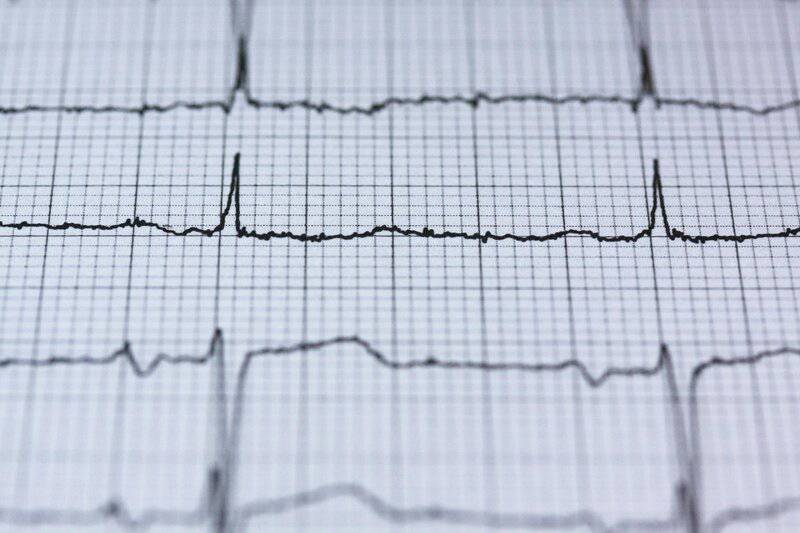
Changes in heart rate—such as a higher resting pulse or episodes of irregular rhythm—can be linked to hormonal fluctuations in women over 50.
As estrogen levels decline, the autonomic nervous system, which helps regulate heart rate, may become more sensitive and reactive.
This can lead to sensations of your heart beating faster than usual, or feeling like it skips a beat, even when you’re calm and at rest.
These heart rate changes differ from those caused by cardiovascular disease, which are often accompanied by symptoms like chest pain, shortness of breath, or swelling in the legs.
With hormone-related changes, the heart rate may fluctuate in tandem with other menopausal symptoms such as hot flashes, anxiety, or sleep disturbances, and typically resolves as hormone levels stabilize.
Elevated resting pulse: Noticeably faster heartbeat without exertion
Irregular beats: Heart occasionally skips or adds beats unexpectedly
Coincides with menopause symptoms: Heart changes appear alongside hot flashes or mood shifts
If you notice persistent or concerning heart rate changes, it’s important to consult your healthcare provider.
They can rule out underlying heart conditions and determine if hormonal imbalance is contributing to your symptoms.
34. Changes in Blood Pressure
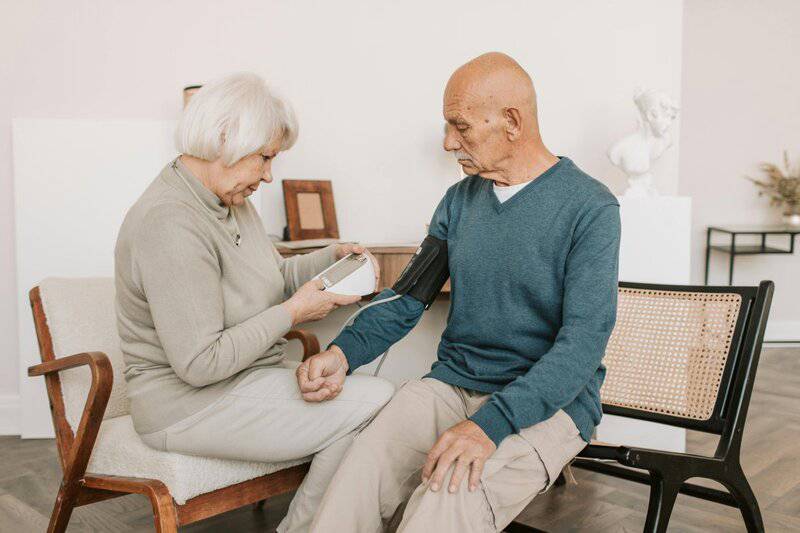
Subtle increases or fluctuations in blood pressure can be another sign of hormonal imbalance in women over 50.
Estrogen helps protect the elasticity of blood vessels and supports healthy vascular function.
As estrogen levels decline during menopause, blood vessels may become less flexible, leading to occasional spikes or drops in blood pressure that may not have been present before.
These changes are often mild at first and may escape notice unless blood pressure is checked regularly.
Unlike the persistent high blood pressure associated with chronic conditions such as hypertension, hormone-related fluctuations may appear alongside other menopausal symptoms like hot flashes, heart palpitations, or increased anxiety.
You might notice occasional dizziness when standing up quickly, mild headaches, or a sense of your heart “pounding” during stressful moments.
Variable readings: Blood pressure numbers fluctuate more than usual
Occasional spikes: Higher readings during stressful or symptomatic moments
Linked to hormonal symptoms: Blood pressure changes coincide with menopause-related shifts
If you observe consistent changes in your blood pressure, it’s wise to share these findings with your healthcare provider.
Monitoring and addressing blood pressure early can help prevent long-term complications and reveal important clues about your hormonal health.
35. Unusual Body Hair Growth

Unusual body hair growth—particularly new or coarse hair appearing on the chin, upper lip, chest, or abdomen—can be an early sign of hormonal imbalance in women over 50.
These changes are often linked to a relative increase in androgens (male hormones present in small amounts in women) as estrogen levels decline during menopause.
Even women who have never experienced facial or body hair may suddenly notice darker or thicker hairs in areas where they previously had little to none.
Unlike hereditary hair patterns or hairiness linked to ethnicity, hormone-driven hair growth tends to develop gradually and may coincide with other symptoms of menopause.
For some, this can be distressing or cause self-consciousness, especially when hair growth appears on visible areas of the face.
It is important to differentiate this change from hair growth caused by certain medications or endocrine disorders such as polycystic ovary syndrome (PCOS).
New facial hair: Coarse or dark hairs on the chin, upper lip, or jawline
Increased body hair: More noticeable hair on the chest, abdomen, or back
Gradual onset: Changes appear over months rather than suddenly
If you’re noticing new or unusual hair growth, discuss it with your healthcare provider to determine if androgen imbalance or another hormonal issue may be the cause and to explore treatment options.
36. Delayed Wound Healing
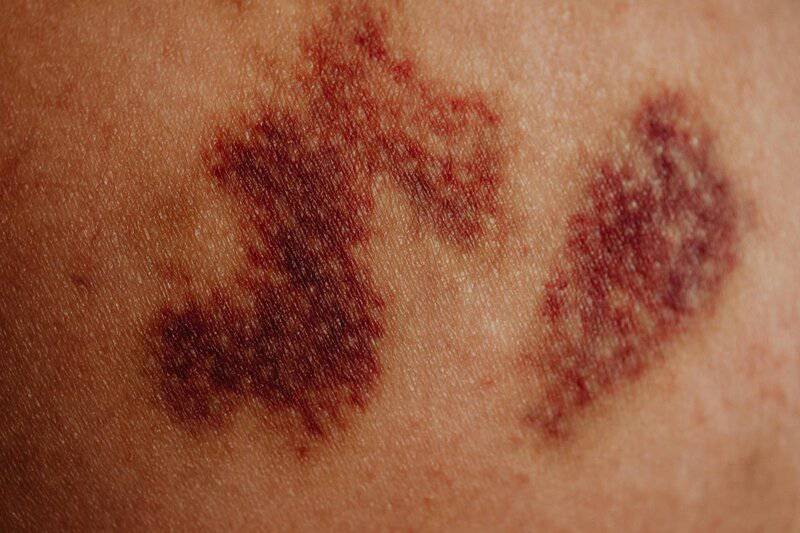
Delayed wound healing—where cuts, scrapes, or bruises take longer than usual to recover—can be an overlooked sign of hormonal imbalance in women over 50.
Estrogen plays a crucial role in maintaining healthy skin and supporting the body’s natural repair processes.
As hormone levels drop, the skin may become thinner, less elastic, and slower to regenerate, resulting in wounds that linger or bruises that fade more slowly than they once did.
This slower healing is different from delayed recovery due to diabetes, poor circulation, or immune disorders, which are typically accompanied by additional symptoms such as numbness, chronic infections, or persistent swelling.
With hormone-related healing changes, you may simply notice that minor injuries seem to “hang around” longer, or that bruises appear from minor bumps and take weeks to disappear.
Persistent cuts or scrapes: Small wounds remain red or open for extended periods
Slow-fading bruises: Bruises last longer and are more frequent
Thinner skin: Skin appears more fragile and prone to injury
If you observe consistently slow wound healing, it’s wise to consult your healthcare provider.
They can help determine if hormonal changes are at play or if another underlying issue requires attention.
37. Gum Problems or Bleeding
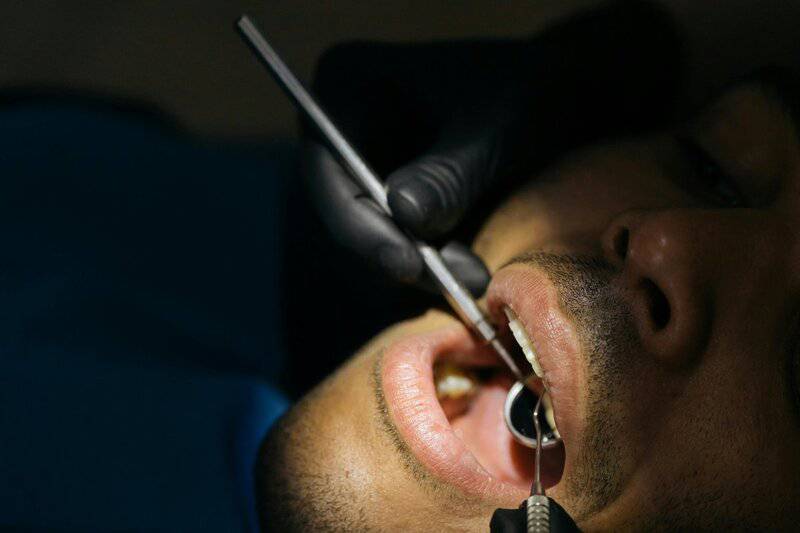
Gum problems—such as increased sensitivity, bleeding, or recession—can be another early sign of hormonal imbalance in women over 50.
Estrogen supports blood flow and tissue health throughout the body, including the gums.
As hormone levels decline, the gums may become more prone to inflammation and less able to recover from daily wear, leading to symptoms that can easily be mistaken for issues solely related to oral hygiene.
Unlike gum problems caused by inadequate brushing or flossing, hormonal changes may trigger sudden or persistent gum bleeding even with a consistent dental routine.
Some women notice their gums feel tender, swollen, or bleed more readily when brushing or eating crunchy foods.
Gum recession—where the gum line pulls away from the teeth—can also accelerate due to weakened connective tissue, increasing sensitivity and risk for dental complications.
Frequent bleeding: Gums bleed with gentle brushing or flossing
Tenderness and swelling: Gums appear red, puffy, or sore
Noticeable recession: Gum line pulls back, exposing more of the tooth
If you experience ongoing gum issues despite good oral care, consult both your dentist and healthcare provider to explore the potential role of hormonal changes in your symptoms.
38. Increased Susceptibility to Colds or Infections

An increased susceptibility to colds or minor infections can be a subtle, yet impactful sign of hormonal imbalance in women over 50.
Estrogen and other reproductive hormones not only regulate reproductive health but also play a role in modulating the immune system.
As these hormone levels decline, the immune response may weaken, leaving the body more vulnerable to common viruses and bacterial infections.
You might notice that you’re catching colds more frequently, or that it takes longer to recover from minor illnesses than it once did.
Small infections—such as sinus issues, urinary tract infections, or even skin irritations—may crop up more often or linger for longer periods.
This increased frequency is not always linked to lifestyle changes, stress, or exposure, but rather to a body that’s less equipped to mount a swift immune defense.
Frequent colds: More than two or three mild respiratory infections per year
Longer recovery: Illnesses take longer to resolve than before
Recurring minor infections: Sinus, skin, or urinary infections reappear regularly
If you notice a pattern of frequent or persistent illnesses, consult your healthcare provider to determine if hormonal changes could be affecting your immune system.
39. Loss of Interest in Hobbies or Activities

A loss of interest in hobbies or activities that once brought joy can be a subtle but meaningful indicator of hormonal imbalance in women over 50.
Declining levels of estrogen and other hormones can influence brain chemistry, leading to shifts in mood, motivation, and overall engagement with life.
This symptom may appear gradually, blending in with the normal stresses and responsibilities of daily living, but it often signifies a deeper hormonal or emotional change.
Unlike temporary boredom or burnout, hormone-related apathy tends to persist despite opportunities for relaxation or changes in routine.
You might find yourself avoiding favorite pastimes—such as gardening, reading, socializing, or creative projects—or feeling indifferent toward activities that previously sparked excitement.
This diminished enjoyment is sometimes accompanied by fatigue, mood swings, or sleep disturbances, further reducing motivation.
Persistent apathy: Ongoing lack of motivation for enjoyable activities
Withdrawal from social life: Declining invitations or avoiding group events
Decreased pleasure: Activities feel less satisfying or meaningful
If you notice a sustained loss of interest in your usual interests, consider discussing this symptom with your healthcare provider to explore whether hormonal or mood changes may be contributing.
40. Changes in Sexual Function or Response

In addition to changes in libido, women over 50 may notice broader shifts in sexual function or response as a result of hormonal imbalance.
Beyond simply feeling less interested in sex, fluctuations in estrogen, progesterone, and even testosterone can influence arousal, the physical response to stimulation, and overall sexual satisfaction.
You may find it takes longer to become aroused, experience less intense sensations, or have difficulty achieving orgasm.
These changes are not purely psychological; they often stem from physical alterations, such as reduced blood flow to the pelvic area, decreased natural lubrication, or increased sensitivity or discomfort.
Some women describe sex as less pleasurable or emotionally fulfilling, even in the absence of relationship issues or external stressors.
These symptoms can occur independently or alongside other menopausal signs, such as sleep disturbances or mood swings.
Reduced arousal: Takes more time or stimulation to become interested in sex
Less satisfying response: Physical pleasure or climax feels diminished
Physical discomfort: Pain or sensitivity during intimacy that is new or persistent
If you’re experiencing changes in sexual function or response, open communication with your healthcare provider can help identify hormonal causes and lead to effective solutions for maintaining intimacy and well-being.
Conclusion & Disclaimer
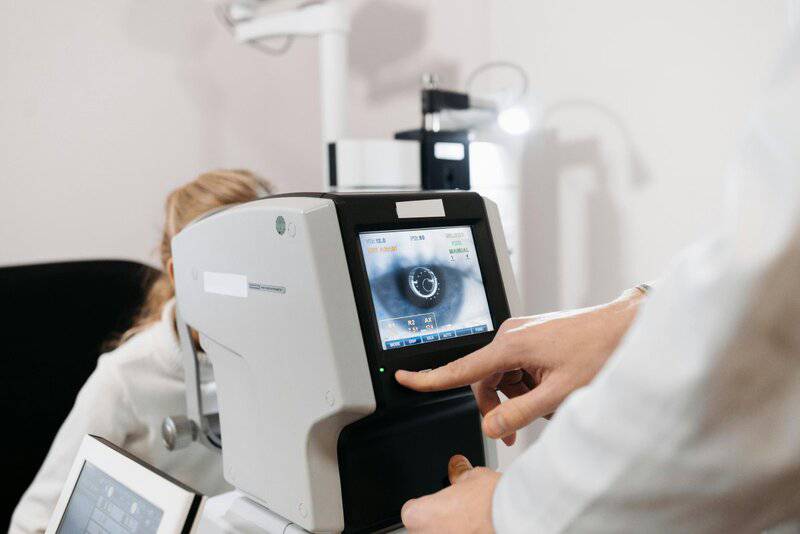
Recognizing the early indicators of hormonal imbalance in women over 50 is essential for protecting long-term health and well-being. While these symptoms can be subtle or easily attributed to aging, paying close attention and seeking timely medical advice can make a significant difference. If you experience persistent, unusual, or severe symptoms, consult a healthcare provider to explore underlying causes and receive tailored support.





